 Tourists Want To Experience ‘Emily in Paris’ for Real
Tourists Want To Experience ‘Emily in Paris’ for Real
A journalist from Finland followed in the footsteps of “Emily in Paris” fans on a themed tour in the fashion capital of the…
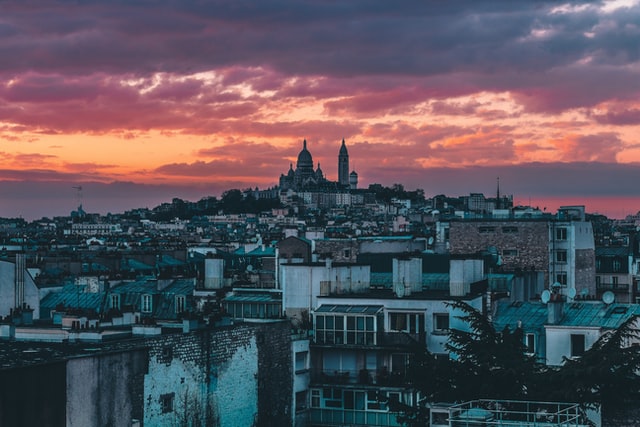
Montmartre is the Paris that you came to see. It’s the whimsical, charming neighborhood most often featured in international depictions of Paris.
It sits atop a hill in the north of the city in the 18th arrondissement. There, you’ll find street artists capturing the views, historic monuments, and quaint cafés. And you’re quite close to the one and only Moulin Rouge, too.
This section of the city is one of the best to walk around in, and it just so happens I live a short stroll from this incredible neighborhood. In this travel guide, I’ll share what not to miss as you wander the historic district.
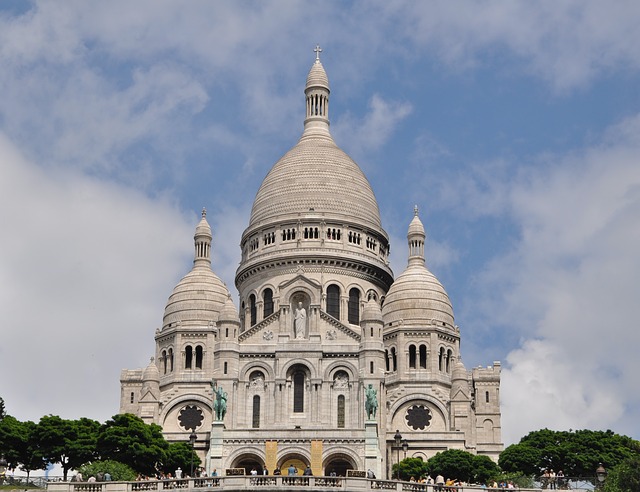
If you ask me, the Basilica of the Sacred Heart of Paris, known to locals as the “Sacré-Cœur,” is the most beautiful church in the city.
Notre Dame is, of course, the most famous, but a trip to the Sacred Heart is an adventure in itself. There are several ways to get there. I recommend walking up the winding hill to take in all the views you can find on certain streets in the city. You could go via Rue Yvonne le Tac, accessible at the Abbesses stop on Metro Line 2. Or you can walk up via Rue Maurice Utrillo, which you can get to at the Chateau Rouge stop on Metro Line 4.
And if you want to give your legs a break, there’s a funicular (a “funiculaire,” in French), similar to a large ski-lift, that you’ll find near the intersection of Place Saint-Pierre and Rue André Barsacq. If you already have a pack of Metro tickets, you can use one of those to take the lift all the way to the top. If you take the Montmartre funicular, it should cut your climb in half. The website has a number of different routes to the basilica, including one for disabled persons.
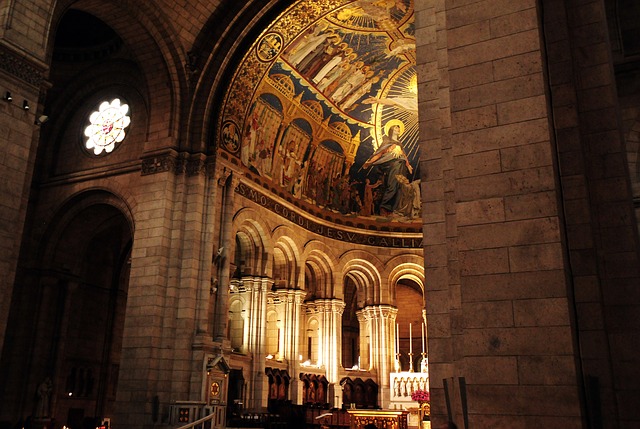
Once you get to the top, the line to enter the basilica is never too long. There will be a guard to check purses and after that you can enter free of charge. Inside, there is a huge portrait of Jesus, known as the Apse Mosaic, a “Mosaic of Christ in Glory” by three 20th-century artists.
It’s one of the largest mosaics in the world, with nearly 150 feet of religious and historical depictions gilded and shining as soon as you enter the house of worship. The mosaic includes a collection of religious authority and saints to the left and right, but the images are dwarfed by the depiction of Christ clothed in a white robe with a golden heart shining on his chest. It almost feels as though the mosaic is following you at every angle as you tour the basilica — its magnitude is hard to describe. Go for yourself and you’ll see what I mean.
You’ll also want to make sure to catch a glimpse of the grand pipe organ. It’s one of the premier instruments of its kind in Europe and truly a sight to behold.
The basilica was built thanks to what is known as the “National Vow.”
When a war between Germany and France in 1870 ended with France’s defeat and partial occupation, two men, Alexandre Legentil and Hubert Rohault de Fleury, decided France’s loss was due to spiritual shortcomings and vowed to build a church as a public display of penitence.
Legentil’s heart was in this project, and it still is — literally. You can visit the crypt, accessible by a staircase outside of the basilica on the left. Inside, you’ll find an altar, along with tombs of deceased cardinals and the foundation rock of the basilica. Look for the urn in front of a decorated wall with Legentil’s name — it contains his heart.
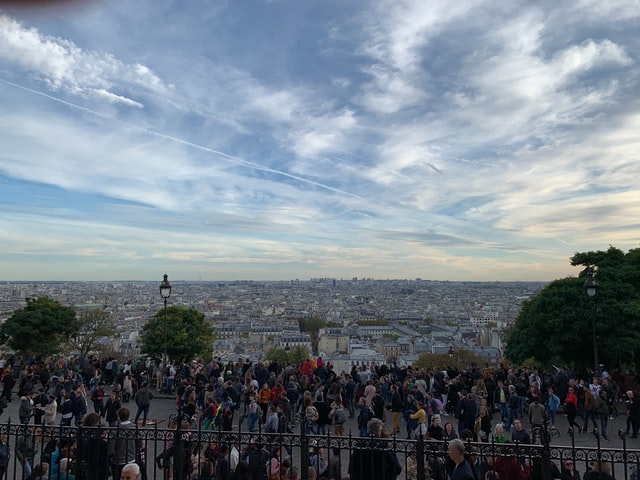
Once exiting the Sacré-Cœur, be sure to check out the view from outside. It’s my favorite view in the city, and I’m not alone in that opinion.
The whole city stretches out before you, and you get a panoramic view of nearly every monument. There’s a great view of the Eiffel Tower in the distance, and at sunset it’s even more remarkable.
Once you take the steps down from the top, you’ll find a nice green area called Square Louise-Michel. It’s a great place to stop for a picnic. You’ll find locals and tourists stretched out on the lawn with a baguette and a blanket. The gardens extend from the hill of Montmartre and lie 222 steps below the Sacred Heart. You’ll find a variety of plant life here, from fig trees to orange trees, as well as a fountain dedicated to ocean gods.
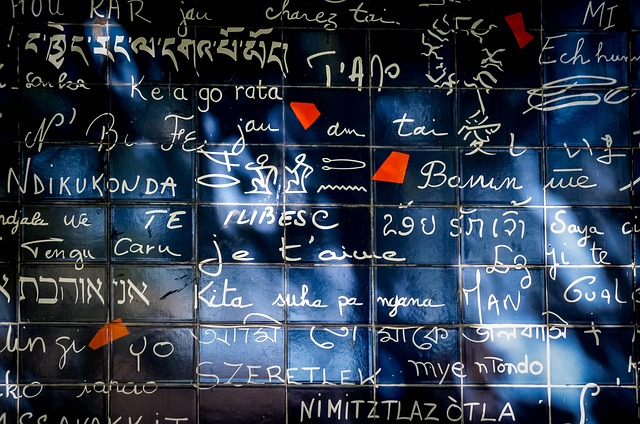
At the bottom of the hill, not far from the Abbesses station, lies the perfectly Instagrammable I Love You Wall, or “Le mur des je t’aime” at Square Jehan-Rictus. The art piece includes “I Love You” written 311 times in 250 languages. The expression pops in white font against the dark blue tiles, with vibrant splashes of red that symbolize a broken heart.
The artwork, created by Frédéric Baron and Claire Kit, was made to bring people together. And it works. The wall is a common stop for both couples and singles visiting Montmartre. There are also occasional art installations near the wall for viewers to enjoy.
A short walk from the I Love You Wall, is Place des Abbesses, a square at the Abbesses Metro station complete with a fountain, a carousel for kids, tall trees for shade, and nice benches to lounge in.
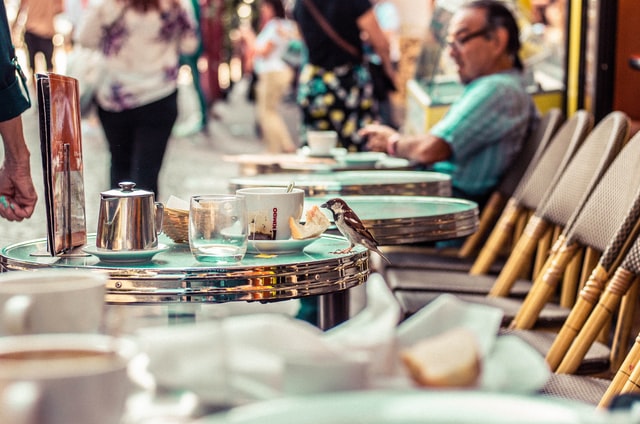
The Montmartre neighborhood is known for being featured in the famous French movie, “Le Fabuleux Destin d’Amélie Poulain,” simply known as “Amélie” in English. It centers around the life of a young waitress at a Parisian café — that café, featured in the film, is still here. It’s called the Café des Deux Moulins and you can find it on Rue Lepic about a five-minute walk from the I Love You Wall. Yes, it’s very touristy, but their drinks aren’t bad.
If you’re looking for something a bit less mainstream, check out The Hardware Société on Rue Lamarck, an Australian-meets-Parisian place, just a couple minutes from Sacré-Coeur. Their breakfast is excellent.
For a nice cup of coffee, check out the Spree café on Rue la Vieuville, another five-minute walk from Place du Tertre. Spree is actually a concept store and art gallery that also has its own coffee shop, a nice modern twist on the neighborhood’s artistic spirit. In any case, they make a good (and pretty) latté.
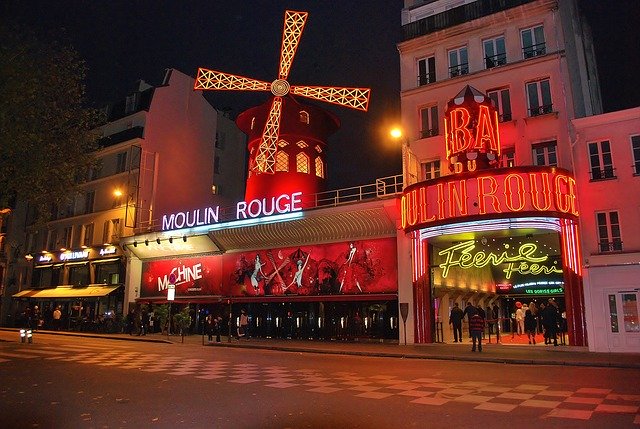
Apart from the Sacré-Coeur, the district is a known art hotspot. Picasso, Van Gogh and Renoir are among the painters who once lived and worked in Montmartre. Now, you can still find artists if you stop by the Place du Tertre where professional (and aspiring) painters and cartoonists set up shop.
Another equally famous site, the Moulin Rouge cabaret on Boulevard de Clichy is located on the outskirts of the Montmartre neighborhood. The huge red windmill is still there today and so are its exciting night shows. And yes, if you’re looking for a rendition of the famous “can-can” dance, you’re in the right place.
Yes, yes, and yes. If nothing else, you have to visit the Sacré-Coeur to get a spectacular view of the city.
There are a number of museums you can check out in the area. If you like the surrealist work of Salvador Dali, you’re in luck. The Dali Museum is about a few minutes on foot from Sacré-Coeur and includes more than 300 works from the artist.
There’s also the Musée de Montmartre or Montmartre Museum close to the basilica, which showcases the district’s history through paintings, sculptures, posters and the like. You’ll also find the Museum of Romantic Life (the “Musée de la Vie Romantique”) on Rue Chaptal, about a 10-minute walk from the I Love You Wall. It showcases art from the Romantic period inside the former home of the painter Ary Scheffer. Temporary exhibitions cost, but the permanent exhibit is free.
Pere Lachaise is the most celebrated cemetery in Paris, but the Cemetery of Montmartre also attracts a crowd. Among 20,000 burial plots, you will find notable names like Émile Zola and Stendhal.
Montmartre is made for a walking tour — we’ve done it many times. There are so many places to walk, from making the trek up to “Butte Montmartre,” the hill that leads to the Sacré-Coeur, to walking around scenic Square Louise-Michel. Montmartre is also home to the oldest pedestrian street in Paris, the Rue Saint-Rustique. Don’t forget to check out the Promenade de Montmartre, a newly developed walking path offering scenic views and historical insights.

Montmartre sits on a hill, and in many ways, the neighborhood really does rise above the rest of Paris. Its beauty has inspired artists for years and continues to do so today. The village feel combined with its cafés, gardens, and historic monuments gives the neighborhood a truly unique atmosphere.
A walking tour of Montmartre is truly the best way to see this historic neighborhood — it’s such an intimate corner of Paris, rich in history, details, and more than a few surprises. And with each step you’ll see just how charming it is.
 Tourists Want To Experience ‘Emily in Paris’ for Real
Tourists Want To Experience ‘Emily in Paris’ for Real
A journalist from Finland followed in the footsteps of “Emily in Paris” fans on a themed tour in the fashion capital of the…
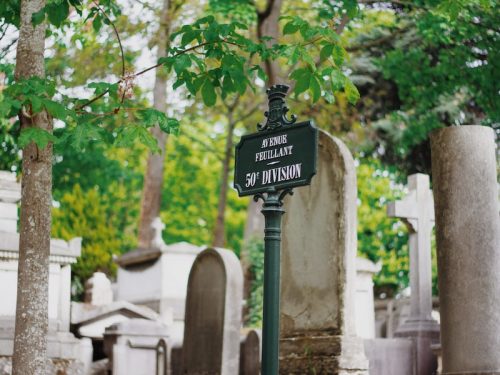 5 Things to Do at Famous Graves in Père Lachaise Cemetery
5 Things to Do at Famous Graves in Père Lachaise Cemetery
Normally, when you imagine a cemetery, you might not think of a picturesque scene. That’s not the case when tourists come from around…
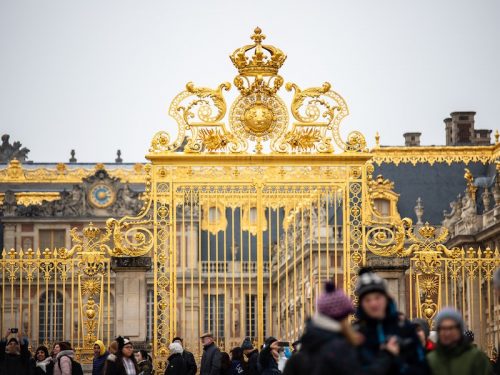 Paris Day Trip to Versailles: How To Do It and What To See
Paris Day Trip to Versailles: How To Do It and What To See
However long your trip to Paris is, don’t forget there’s more to see just outside the city limits. One of the best day…